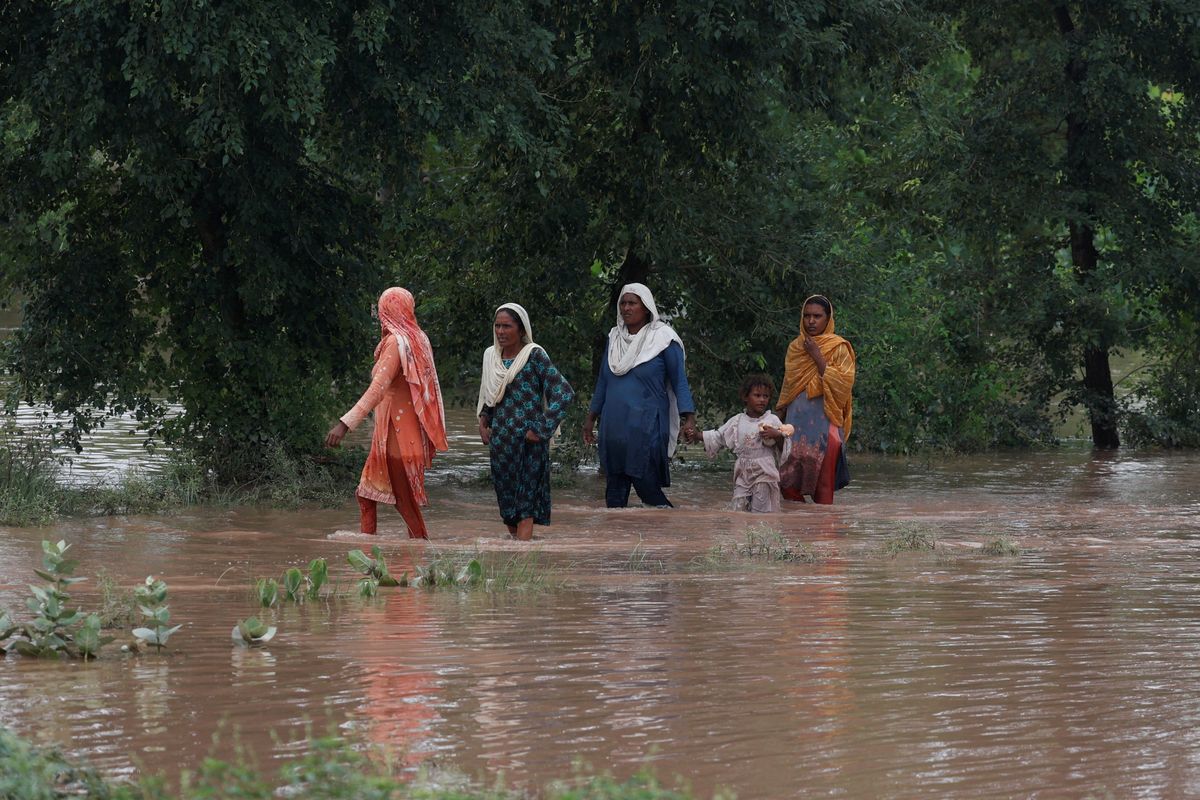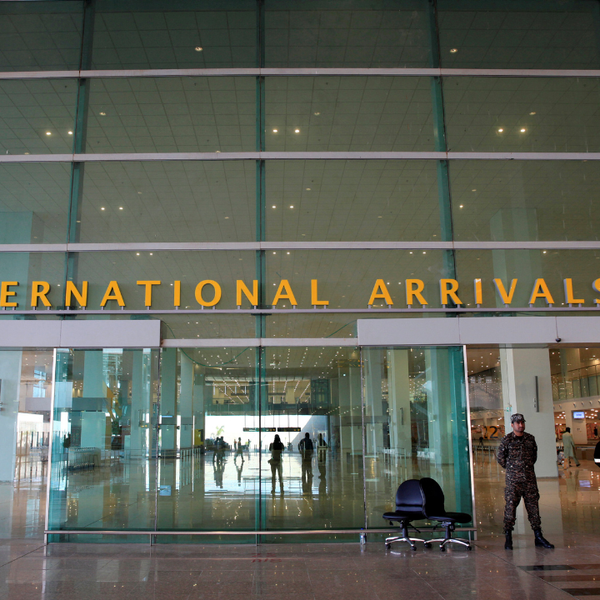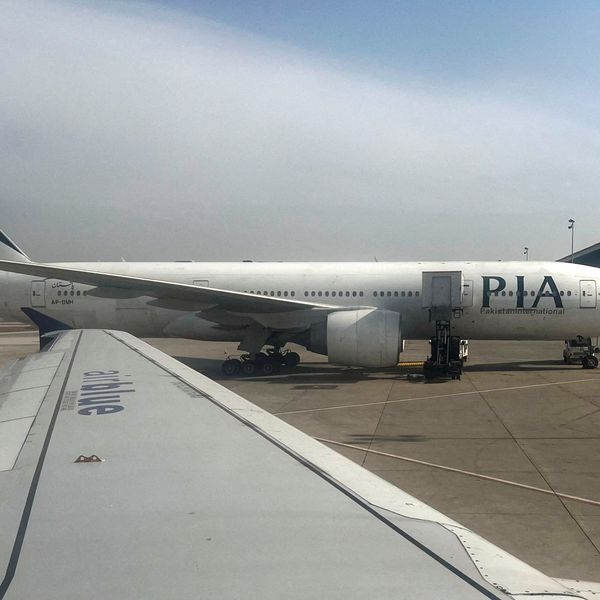Pakistan floods threaten food supply, inflation seen near 4%
Analysts warn food inflation could rise further in September as flood damage hits crops and supply chains

Haris Zamir
Business Editor
Experience of almost 33 years where started the journey of financial journalism from Business Recorder in 1992. From 2006 onwards attached with Television Media worked at Sun Tv, Dawn Tv, Geo Tv and Dunya Tv. During the period also worked as a stringer for Bloomberg for seven years and Dow Jones for five years. Also wrote articles for several highly acclaimed periodicals like the Newsline, Pakistan Gulf Economist and Money Matters (The News publications)

People wade through a flooded field, following monsoon rains and rising water levels of the Chenab River, in Harsa Bhula village, Chiniot district, Punjab province, Pakistan August 30, 2025.
Reuters
Pakistan’s recent floods are expected to push up food prices, with inflation for August likely to touch 4%, analysts said Saturday.
The Pakistan Bureau of Statistics will release official inflation numbers on Monday. Inflation is projected to ease to 3.9% in August, down from 4.07% in July, mainly due to a high base effect and a stable food index. But some analysts expect the rate to hover closer to 4%.
On a monthly basis, consumer prices are projected to rise by 0.2%, driven by increases in food, education, and recreation and culture categories. The food index is anticipated to climb 0.5% MoM, while education costs are expected to rise 2% on the back of higher school fees.
Mustafa Mustansir, Director of Research and Business Development at Taurus Securities, told Nukta that based on initial estimates and past flood patterns, food inflation could accelerate from September onward.
“We anticipate food inflation to pick up Sep’25 onwards, citing losses and disruptions owing to the floods,” he said.
Prices of certain fruits and vegetables have already soared. MoM growth in non-perishable food items averaged 2.5% between July and December 2022 after major flooding, while perishable food prices climbed 4.8% over the same period. Food inflation had been on a declining trend from August 2024 to June 2025, averaging just 0.4% MoM, but posted a sharp 3% increase in July 2025.
Items most vulnerable to further price hikes include wheat, rice, potatoes, onions, tomatoes, milk, and eggs. Pulses and other staples may also face pressure depending on the scale of crop losses, Mustansir said.
“Our base case NCPI for FY26 now stands at 7.8% YoY,” he added. The projection incorporates softer fuel prices, but any significant crop damage in Sindh and Punjab remains a key upside risk. Mustansir said this upward revision means no interest rate cuts are expected for the rest of the fiscal year.
Analysts from Al-Habib Capital Markets noted that food prices are expected to rise particularly due to flood damage in Punjab, the country’s main food basket. Severe crop losses, they warned, could also hit GDP growth and raise the import bill as Pakistan seeks to fill supply gaps.
An analyst from Insight Securities added that floods in Khyber Pakhtunkhwa and Punjab risk further straining agricultural output and supply chains, creating renewed inflationary pressures.
“It is important to safeguard the nascent stabilization and strengthen the economic base before shifting gears to growth,” the analyst said.







Comments
See what people are discussing